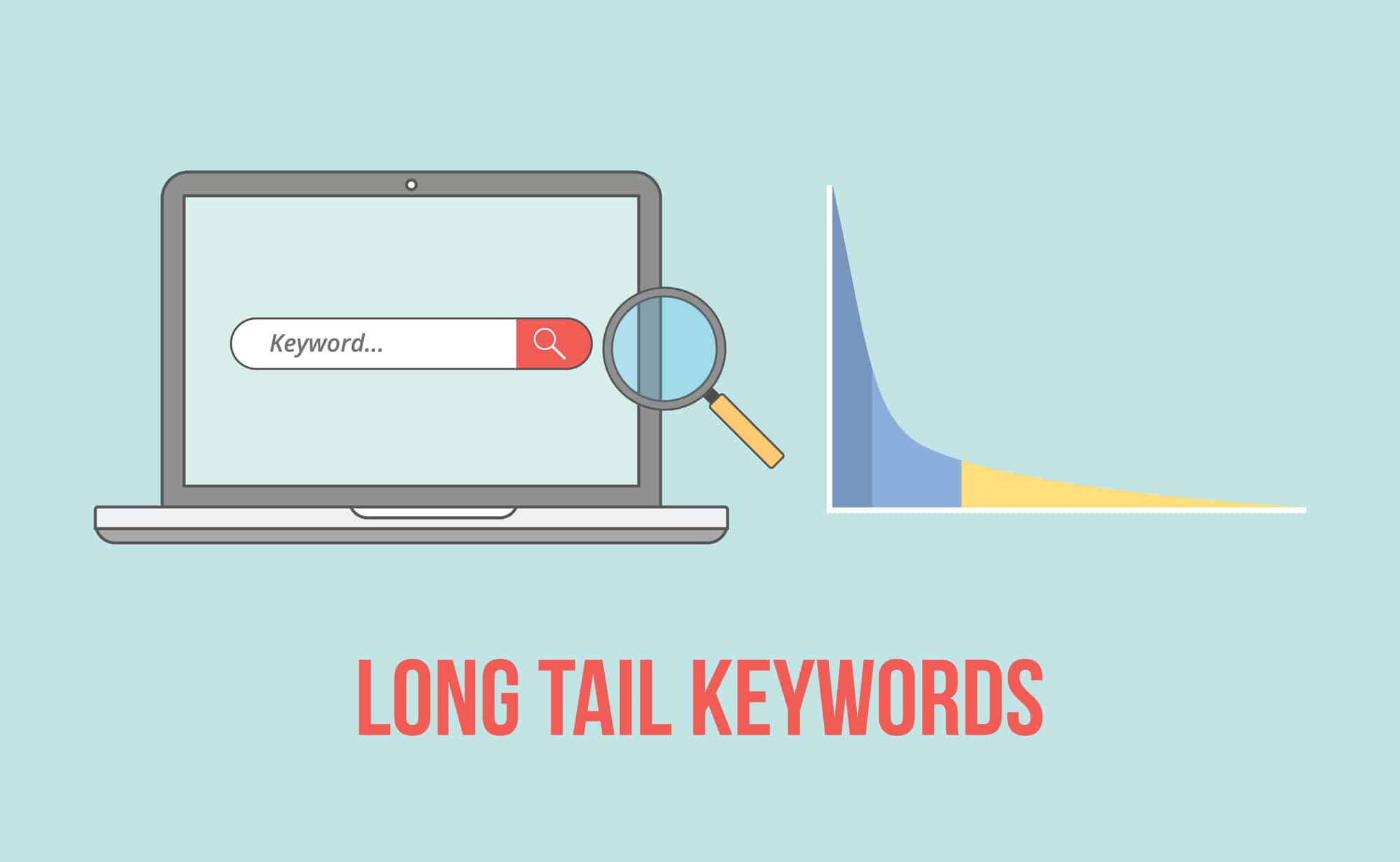Explore longtail keywords: their benefits, identification, and role in effective SEO strategies.
Definition of Longtail Keywords
Longtail keywords are specific phrases that usually consist of three to five words. They help target niche audiences who are looking for something very particular. For example, instead of just searching for “shoes,” someone might search for “best running shoes for flat feet.”
Characteristics of Longtail Keywords
- Length: Typically longer than standard keywords.
- Specificity: They focus on a particular topic or need.
- Lower Search Volume: They are searched less frequently than broader terms.
Importance of Longtail Keywords
Longtail keywords are crucial for several reasons:
- Higher Conversion Rates: Users searching for specific phrases are often closer to making a purchase.
- Lower Competition: Fewer businesses target these keywords, making it easier to rank higher in search results.
- Cost-Effective: They can reduce advertising costs in paid search campaigns due to lower competition.
Benefits of Using Longtail Keywords
Higher Conversion Rates
Longtail keywords can lead to higher conversion rates because they attract users who are more specific about what they want. When people search for detailed phrases, they are often closer to making a purchase. For example:
- A user searching for “best running shoes for flat feet” is more likely to buy than someone just searching for “shoes.”
- This means that targeting longtail keywords can help businesses get more sales from their website traffic.
Lower Competition
Another benefit is that longtail keywords usually have lower competition. This makes it easier for your content to rank higher in search results. Here’s a quick comparison:
| Keyword Type | Competition Level | Search Volume |
|---|---|---|
| Short Keywords | High | Very High |
| Longtail Keywords | Low | Moderate |
Fewer businesses are targeting these specific phrases, so you can stand out better.
Cost-Effective Advertising
Using longtail keywords can also be cost-effective for online advertising. You often pay less per click when you bid on longtail keywords in ads. This is because:
- Fewer advertisers are competing for these keywords.
- You can reach a more targeted audience, leading to better returns on your investment.
- Your ads are more likely to be shown to users who are ready to buy.
In summary, longtail keywords can help businesses improve their conversion rates, face less competition, and save money on advertising.
How to Identify Longtail Keywords
Keyword Research Tools
To find longtail keywords, you can use various tools that help you discover what people are searching for. Here are some popular options:
- Google Keyword Planner: This tool shows you keyword ideas and their search volumes.
- Ubersuggest: A user-friendly tool that provides keyword suggestions and competition data.
- AnswerThePublic: This tool visualizes questions and phrases people are searching for related to your topic.
Analyzing Search Queries
Understanding how people search can help you identify longtail keywords. Here are some steps to follow:
- Look at Google Autocomplete: Start typing a phrase in Google and see what suggestions pop up.
- Check Related Searches: At the bottom of the search results page, Google shows related searches that can inspire longtail keywords.
- Use Forums and Q&A Sites: Websites like Quora or Reddit can provide insights into what questions people are asking.
Using Buyer Personas
Creating buyer personas can help you understand your audience better. Here’s how to use them:
- Identify Your Target Audience: Know who you are trying to reach.
- Understand Their Needs: What problems are they trying to solve?
- Create Keyword Lists: Based on your personas, brainstorm longtail keywords that match their search intent.
Using these methods, you can effectively identify longtail keywords that will help improve your SEO strategy.
Implementing Longtail Keywords in SEO Strategy
Content Optimization
To effectively use longtail keywords, you need to optimize your content. Here are some steps to follow:
- Identify relevant longtail keywords that match your content.
- Use these keywords naturally in your text, headings, and meta descriptions.
- Ensure your content answers users’ questions related to these keywords.
On-Page SEO Techniques
Incorporating longtail keywords into your on-page SEO can boost your visibility. Consider these techniques:
- Use longtail keywords in your URL structure.
- Include them in image alt texts.
- Create internal links using longtail keywords to connect related content.
Tracking and Measuring Success
To see how well your longtail keywords are performing, you should track their effectiveness. Here’s how:
- Use tools like Google Analytics to monitor traffic from longtail keywords.
- Check your rankings for these keywords regularly.
- Adjust your strategy based on what works best, focusing on keywords that bring in the most traffic and conversions.
Common Misconceptions About Longtail Keywords
Myth: Longtail Keywords Are Not Worth the Effort
Many think longtail keywords aren’t worth the time because they attract less traffic. However, the traffic they do bring is often more focused and ready to buy. This means that even if the numbers are lower, the quality of visitors can lead to better sales.
Myth: Longtail Keywords Generate Low Traffic
While it’s true that longtail keywords usually have lower search volumes, they make up a large portion of all searches. About 70% of all online searches are longtail keywords. This means they can collectively drive significant traffic to your site, especially when combined.
Myth: Longtail Keywords Are Only for Small Businesses
Some believe that only small businesses should use longtail keywords. In reality, businesses of all sizes can benefit from them. Longtail keywords help target specific audiences, making them valuable for any company looking to connect effectively with potential customers.
Examples of Effective Longtail Keywords
E-commerce Examples
Longtail keywords can be particularly useful for e-commerce businesses. Here are some effective examples:
- “best running shoes for flat feet”
- “organic dog food for sensitive stomachs”
- “affordable wedding dresses online”
These keywords help attract customers who know exactly what they want.
Service-Based Business Examples
Service-based businesses can also benefit from longtail keywords. Consider these:
- “plumbing services for old houses”
- “affordable graphic design for startups”
- “emergency locksmith near me”
These phrases target specific needs, making it easier to connect with potential clients.
Local SEO Examples
For local businesses, longtail keywords can drive targeted traffic. Here are some examples:
- “best pizza place in downtown Chicago”
- “family-friendly hotels in Orlando”
- “yoga classes for beginners in Seattle”
Using these keywords helps local businesses stand out in their communities.
Challenges in Using Longtail Keywords
Finding the Right Keywords
Finding the right longtail keywords can be tricky. Here are some challenges:
- Limited Search Volume: Many longtail keywords have low search volumes, making it hard to find popular ones.
- Research Time: It takes time to research and analyze which longtail keywords will work best for your content.
- Changing Trends: Trends can change quickly, so a keyword that works today might not be effective tomorrow.
Balancing Longtail and Head Keywords
It’s important to find a balance between longtail and head keywords. Here are some points to consider:
- Traffic vs. Relevance: Head keywords may bring more traffic, but longtail keywords often attract more relevant visitors.
- SEO Strategy: A good SEO strategy should include both types of keywords to maximize reach and effectiveness.
- Content Focus: Too many longtail keywords can dilute your content focus, making it less effective.
Maintaining Content Relevance
Keeping your content relevant while using longtail keywords can be challenging. Consider these tips:
- Quality Over Quantity: Focus on creating high-quality content that naturally incorporates longtail keywords.
- Regular Updates: Update your content regularly to keep it relevant to current trends and search behaviors.
- User Intent: Always consider the user’s intent behind the keywords to ensure your content meets their needs.
Conclusion
In summary, long-tail keywords are essential for anyone looking to improve their online presence. These phrases, usually made up of three to five words, help you connect with specific audiences who are ready to make a purchase. While they may attract less traffic compared to broader keywords, the visitors they do bring are often more interested in what you offer. This means they are more likely to convert into customers. As search habits evolve, especially with the rise of voice search, using long-tail keywords can give your content a significant advantage. By focusing on these specific terms, you can enhance your website’s visibility and better meet the needs of your audience.
Frequently Asked Questions
What are longtail keywords?
Longtail keywords are specific phrases that usually consist of three to five words. They help target smaller groups of people who are looking for something very specific.
Why are longtail keywords important for SEO?
They attract more focused visitors who are likely to convert, meaning they are more likely to make a purchase or take action.
How can I find longtail keywords?
You can use keyword research tools, examine search suggestions, or consider what your potential customers might ask.
Are longtail keywords less competitive?
Yes, longtail keywords usually have less competition than shorter, more general keywords, making it easier to rank for them.
Can longtail keywords help with advertising?
Absolutely! Bidding on longtail keywords often costs less per click, which can save money while attracting more interested customers.
What are some examples of longtail keywords?
Examples include phrases like “best running shoes for flat feet” or “how to make homemade pizza dough.” These are specific and targeted.







Leave a Reply